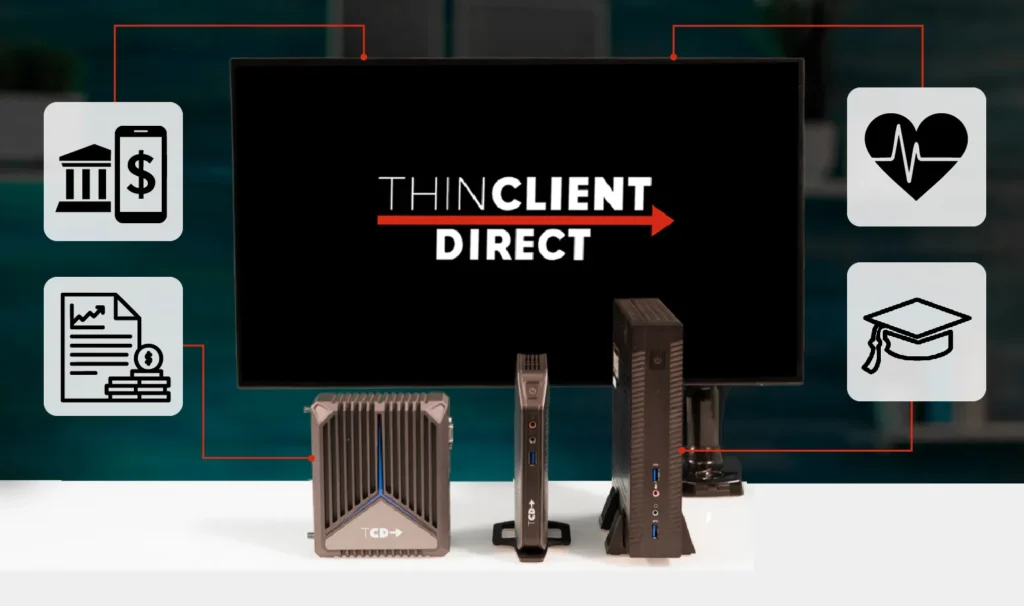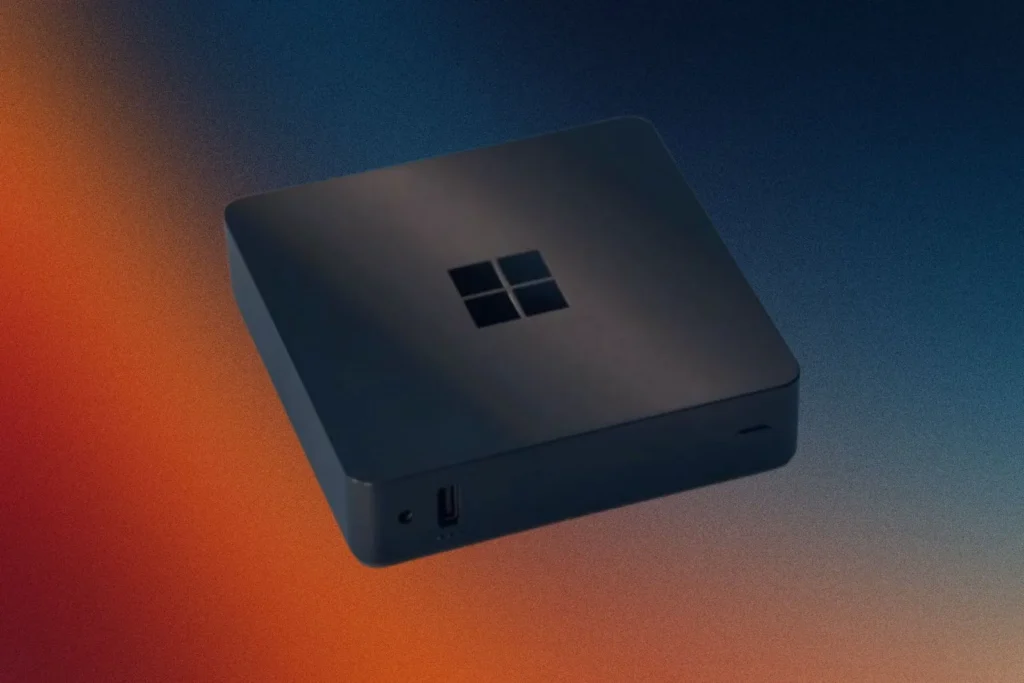VDI and DaaS Endpoints: Insights to Kickstart 2025 with ThinClient Direct (TCD)
December 31, 2024
The world of Virtual Desktop Infrastructure (VDI) and Desktop as a Service (DaaS) continues to evolve rapidly, with businesses embracing virtualization, cloud solutions, and advanced security frameworks. Yet, amid these advancements, many organizations still struggle to optimize their endpoint strategies fully. At ThinClient Direct (TCD), we’ve worked with clients who face challenges ranging from overpaying for incomplete solutions to underspending on hardware that fails to meet their needs. This blog will discuss key VDI and DaaS endpoint trends 2025 and how businesses can avoid common pitfalls.

The VDI and DaaS Endpoint Landscape in 2024-2025
1. The Rise of Cloud-Based Virtual Desktops and Demanding Edge Endpoints
The adoption of Desktop as a Service (DaaS) continues to grow, enabling businesses to deliver scalable, secure, and remote-friendly workspaces. However, the role of the endpoint has expanded, requiring more powerful hardware to meet modern demands. However, safe and hardened edge endpoints must now handle tasks such as displaying high-resolution 4K images across multiple monitors, running multiple applications simultaneously, and supporting local browsing with various tabs. As a result, endpoint hardware resources have become more demanding, and businesses need to ensure their endpoints are equipped to support these advanced capabilities without performance degradation.
2. AI-Driven Enhancements for Resilient Cloud Desktops and Automated Remediation
Artificial Intelligence (AI) is set to play a key role in making cloud desktops more resilient and adaptive. AI-driven systems can optimize resource allocation, predict performance issues, and automate troubleshooting, providing a seamless user experience and reducing downtime. Additionally, AI can offer administrators intelligent suggestions to resolve user issues quickly and enable automated remediation for specific scenarios, minimizing disruptions and IT overhead.
3. Security-First Approaches with Hardened Endpoints
Organizations implement Zero Trust models to protect data and systems when cyber threats evolve. While security is critical, many businesses overlook endpoint security, leaving gaps that attackers can exploit. Secure, hardened endpoints with purpose-built operating systems are key to defending against modern threats. These systems provide built-in protections, simplify compliance, and reduce vulnerabilities by minimizing attack surfaces.
4. Emphasis on Collaboration Tools and Modern Workflows
The modern workplace demands seamless collaboration tools like Microsoft Teams and Zoom, which have become integral to business operations and hybrid work environments. These tools enable real-time communication, video conferencing, and collaborative document editing, improving productivity and team dynamics. However, the performance of these applications heavily depends on endpoint hardware specifications and network infrastructure. Businesses often underestimate the resources needed to deliver a smooth collaboration experience, especially when supporting high-definition video calls, extensive file sharing, and virtual whiteboarding. Ensuring endpoints are equipped with sufficient processing power, RAM, and GPU capabilities is essential to prevent lags and disruptions. Optimized configurations prioritizing collaboration tool performance can drastically enhance the user experience and support modern workflows.
5. Growing Adoption of Enterprise Cloud Browsers as VDI and DaaS Alternatives
Enterprise cloud browsers are becoming a key component in VDI and DaaS strategies. These browsers provide secure, isolated environments for web-based applications and offer centralized management capabilities. They simplify IT operations by reducing reliance on locally installed applications while enhancing security through built-in data protection features. As businesses continue to embrace cloud-native workflows, enterprise cloud browsers enable seamless access to resources and improve user productivity without compromising security. They can also replace some or all aspects of VDI and DaaS, depending on how much enterprises are tied to applications that must run on Windows.
6. Growing Compliance Requirements
Compliance is more prominent in VDI and DaaS strategies as industries face stricter data security, privacy, and governance regulations. Modern endpoint solutions must simplify compliance efforts by providing built-in tools for auditing, encryption, and access controls. Companies that prioritize compliance safeguard their data and position themselves to navigate industry regulations and standards confidently.
Common Pitfalls in VDI and DaaS Endpoint Strategies
1. Misaligned Solutions and Overpaying for Features
Many organizations end up with misaligned solutions—either overpaying for features they don’t need or implementing systems that lack the flexibility and scalability for growth. TCD frequently encounters businesses locked into rigid systems or overengineered setups that exceed actual requirements, driving unnecessary costs. Right-sizing solutions based on realistic needs is critical to avoiding overspending and performance gaps.
2. Ask the Right Questions and Push for Clarity
One of the most overlooked aspects of VDI & DaaS endpoint strategies is asking the right questions early in the process. Businesses often accept configurations, pricing, or features without scrutiny, leading to excessive complexity or inadequate solutions. TCD encourages clients to push for clarity, question proposals, and raise concerns about costs or functionality. Our team works closely with clients to ensure solutions are aligned with their needs, budgets, and growth plans, fighting to deliver the best outcomes.
3. Overpaying for Subpar Solutions
Many organizations overpay for solutions that lack the flexibility and scalability needed for growth. TCD often encounters businesses locked into rigid systems, unable to adapt to new requirements without incurring significant costs.
4. Cost-Cutting That Backfires
While cost savings are a priority, businesses opting for the cheapest hardware often pay the price later. Inadequate specifications lead to frequent replacements, downtime, and an inability to support modern software and collaboration tools.
5. Simplifying Endpoints with Simple OS and Centralizing Management
Simplifying endpoints with a simple OS and centralizing management are critical steps for businesses looking to scale or reduce IT overhead. Lightweight, purpose-built operating systems streamline endpoint performance, reduce resource requirements, and simplify updates. With centralized management, IT teams can efficiently handle updates, monitor security, and troubleshoot issues remotely. This approach reduces support costs and ensures consistent device performance and protection.
6. Lack of Expert Support
Proper expert support is key—not just from a technical perspective but also for tasks as simple as quickly obtaining a quote and understanding the landscape of offerings and solutions. Businesses that fail to consult specialists often have suboptimal solutions that increase costs and complexity in the long run.

How TCD Helps Clients Optimize VDI and DaaS Endpoints
Reliable and Fast Support with Vetted Industry Solutions
At TCD, we understand the importance of fast and reliable support. Whether it’s technical assistance, commercial inquiries, or understanding the latest offerings and solutions, our team is ready to respond quickly. We are partnered with the best in the industry and have thoroughly vetted the solutions we provide, ensuring businesses receive high-quality, proven options. Businesses need a partner to provide answers and solutions without delay, ensuring minimal downtime and maximum productivity.
Flexible, Future-Proof Hardware with Maximum Value
At TCD, we provide customizable and upgradeable hardware solutions, ensuring clients aren’t locked into devices that can’t keep up with evolving needs. We focus on delivering the best or highest specifications within your budget, maximizing performance without overspending. Our systems support multiple OS configurations, enabling compatibility with VDI and DaaS platforms, including Citrix, Omnissa (Horizon, Workspace ONE), Microsoft AVD & Windows 365, Parallels, Dizzion, and others.
Scalable Centralized Management
We emphasize solutions that simplify endpoint management. These allow IT teams to deploy updates, monitor security, and troubleshoot issues remotely, reducing overhead costs and supporting scalability.
Security at the Core
Our solutions are built with security, ensuring clients can confidently adopt Zero Trust frameworks and meet compliance standards while protecting sensitive data. We also guarantee that our solutions meet compliance standards, helping businesses avoid regulatory risks while safeguarding sensitive data.
The Road Ahead
The VDI and DaaS endpoint market 2025 highlights the need for strategic planning, scalable solutions, and security-first approaches. Businesses that balance cost-efficiency with performance optimization are poised for long-term success. AI is expected to enhance cloud desktop resilience further, enabling more innovative, responsive systems. At TCD, we help clients navigate these challenges with hardware and management solutions that deliver value without compromise.
Contact us today for more information on how ThinClient Direct can optimize your VDI and DaaS endpoint strategy.



